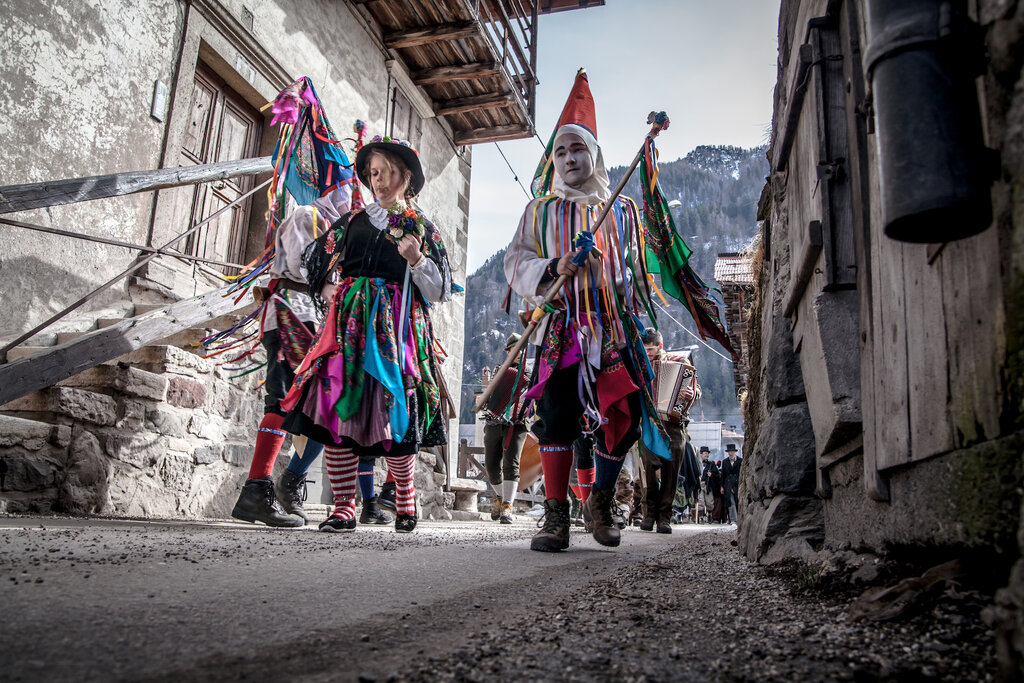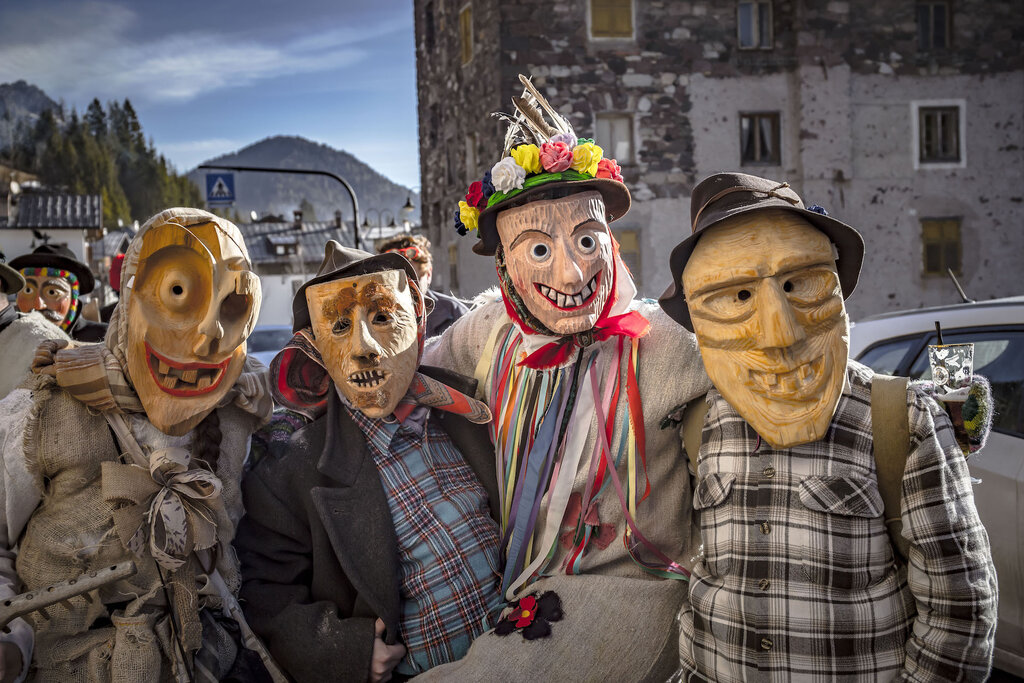A truly special, one-of-a-kind event awaits you in Canale d'Agordo. The Zinghenésta is the ‘queen’ of Carnival, elected each year by a special council: in addition to her good looks, she must be a good dancer and come from the village.
This charming figure, dressed in her finest festive attire and a belt from which hang handkerchiefs, pendants and pretty necklaces (all gifts from admirers), is the star of a colourful parade of symbolic characters.
There is the Paiàzo: the leader of the group, wearing a wooden mask and carrying a broom covered in bells, who has the power to do whatever he wants. By blowing his horn, he calls the villagers together and officially kicks off the Carnival. Then there are the Matiei and the Lacché (who you can recognise by their strange hats) and you will find the Bér, pastoral figures dressed in leather, with heavy bronze rattles, who represent and call for Spring with their slow, primitive movements.
There are also the Sasign, armed and menacing figures with their faces painted black or hidden by wooden masks, whose role is to create disorder. However, they are watched over by a special spy (Caoròn Spiòn), ready to report their misdeeds to the Gendarmi (Royal Gendarmes).
Get ready to follow a complex and exciting ritual, which culminates in a highly symbolic moment: the mock trial and condemnation of a puppet (Signor Carneval), who is blamed for all the misfortunes of the past year. After lunch, the festival includes a grand parade through the streets of Canale d'Agordo and the arrival in Piazza Papa Luciani, which becomes a large open-air dance floor, where the Zinghenesta awaits you to dance in joy.
- Where does it take place? In Canale d'Agordo, the birthplace of Blessed Pope Luciani, John Paul I.
- When? On the last Sunday of Carnival.



